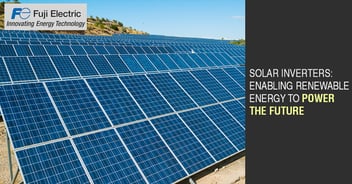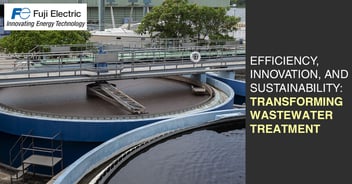Everything Engineers Should Know About Variable Frequency Drives

Imagine an industrial environment where every motor-driven process operates at its peak efficiency, adjusting in real-time to changing conditions without wasting energy. This isn’t a future aspiration, and it’s the reality made possible by Variable Frequency Drives (VFDs). As industries across India and the globe shift toward more innovative, more sustainable operations, Variable Frequency Drives (VFDs) are becoming the crucial link between traditional machinery and the demands of modern automation.
Once considered an optional enhancement, VFDs have now become the backbone of industrial motion control. In an era of rising energy costs, environmental sustainability, and ever-increasing demands for precision, VFDs offer a unique solution by optimizing motor speed and reducing energy consumption. By seamlessly integrating with existing systems, VFDs are no longer a luxury; they are the key to staying competitive, efficient, and future-proof in today’s fast-paced industrial world.
Let’s explore how VFDs are transforming industries, making them more efficient and better equipped to face the challenges of tomorrow.
Understanding the Role of a VFD
At its core, a VFD is a power electronic device that adjusts the speed and torque of an AC motor by varying the frequency and voltage of its input power. This is accomplished through three critical stages:
- Rectification: Converts AC input into DC using diodes or controlled rectifiers
- DC Bus Filtering: Smooths and stabilizes DC power using capacitors and inductors
- Inversion: Uses Insulated Gate Bipolar Transistors (IGBTs) and Pulse Width Modulation (PWM) to synthesize a variable-frequency AC output
This real-time modulation allows motors to operate at speeds best suited to load requirements, minimizing inefficiencies and protecting system components.
How PWM and Carrier Frequency Work in a VFD
The inverter stage uses Pulse Width Modulation (PWM) to recreate a sinusoidal waveform by rapidly switching IGBTs on and off. This switching frequency, known as the carrier frequency, typically ranges between 4 kHz to 16 kHz. A higher carrier frequency provides smoother output but generates more heat and electromagnetic interference (EMI), which must be carefully managed through heat sinks, filters, and shielding.
Key Advantages of Using VFDs
- Energy Efficiency: VFDs adjust motor speed to match process demand, avoiding the energy waste seen in fixed-speed motors. In fan and pump systems, a small reduction in speed can translate to dramatic energy savings (per affinity laws), reducing utility costs and carbon footprint.
- Soft Start & Reduced Mechanical Stress: VFDs replace high inrush currents with smooth acceleration profiles. This avoids mechanical shock to gearboxes, belts, and shafts, while also preventing voltage sags that impact other equipment on the line.
- Precision Process Control: By regulating speed in real-time, VFDs stabilize critical process parameters such as pressure, flow, and torque. This enables higher product consistency, especially in industries like packaging, food, pharma, and water treatment.
- Flexible Operation: From slow ramp-ups to dynamic load adaptation, VFDs offer the flexibility to support diverse operational modes without physical reconfiguration—ideal for variable load applications like HVAC, conveyors, cranes, and machine tools.
- Reduced Peak Demand: Because VFDs eliminate motor start-up surges and modulate ongoing power draw, they help flatten energy consumption profiles and reduce demand-based penalties from utilities.
Applications Across Industries
VFDs are deployed widely across:
- HVAC systems: Real-time fan/compressor speed control based on occupancy or temperature
- Water & Wastewater: Pump flow regulation with anti-clogging and reverse-flush features
- Material handling: Variable-speed conveyors and smooth hoist operations
- CNC & machine tools: Spindle speed optimization based on material and tool
- Mixing and extrusion: Torque stability for consistent output in plastics, pharma, and F&B
- Smart Control Modes: Scalar vs. Vector
VFDs typically support two control methods:
- Scalar (V/Hz) Control: Simple and cost-effective. Suited for fans, pumps, and basic loads.
- Vector Control: Delivers dynamic performance using motor feedback (open-loop or with encoder). Ideal for torque-intensive or speed-critical applications.
What to Consider When Choosing a VFD
Key factors that affect VFD selection include:
- Motor specs: Voltage, HP/kW, full load amps (FLA), RPM
- Application needs: Starting torque, speed range, duty cycle
- Load type: Constant or variable torque
- Environment: Dust, heat, vibration, chemical exposure
- Control interfaces: Modbus RTU/TCP, EtherNet/IP, CC-Link IE, analog I/O
- Harmonic mitigation: Consider filters, reactors, or AFE drives if THD is a concern
- Motor type: Use inverter-duty motors with proper insulation to withstand voltage spikes from PWM switching
- Maintenance: A Key to Longevity
VFDs are low-maintenance, but routine checks ensure optimal performance:
- Clean cooling fans and heat sinks
- Inspect terminals, capacitors, and busbars for wear or corrosion
- Update firmware and monitor diagnostics logs
- Shield power cables and ground systems properly to avoid EMI
- Use predictive diagnostics to anticipate component aging (fans, relays, capacitors)
Preventive maintenance extends both drive and motor life, minimizing downtime and improving reliability.
VFDs in the current Era
Today’s VFDs are more than just motor controllers—they are intelligent edge devices. Modern drives support:
- AI-based diagnostics to detect vibration, thermal anomalies, or motor wear
- TSN (Time-Sensitive Networking) for real-time, deterministic communication
- Cloud connectivity for energy monitoring and fleet-wide analytics
- Smart setup software that reduces commissioning time via guided wizards and auto-tuning
Security protocols that protect industrial networks from unauthorized access or firmware manipulation
To know more about our VFDs, click here.
As industries across India adopt energy-efficient, automated systems, Variable Frequency Drives (VFDs) are at the forefront of this transition. They help engineers and plant operators achieve more with less energy, less wear, and less downtime.
Fuji Electric India’s portfolio of high-performance VFDs delivers advanced motor control, robust design, and smart diagnostics tailored to modern industrial environments. Whether your goal is to cut energy costs, improve output quality, or enable intelligent automation, our VFDs are designed to meet the challenge.
Ready to make your operations more efficient and future-proof? Speak to our experts to find the right VFD for your application.
 China
China Europe
Europe France
France Hong Kong
Hong Kong Indonesia
Indonesia Japan
Japan Singapore
Singapore Thailand
Thailand USA
USA

